Our website is not supported on this browser
The browser you are using (Internet Explorer) cannot display our content.
Please come back on a more recent browser to have the best experience possible

In our previous article on Project Cost Management, we looked at what cost management is and what the different types of cost are. In this article, we will review the key elements necessary for implementing cost management into your organization. Together, these concepts build the foundation for effective cost management and set your organization up for success.
In order to implement a project cost management framework, it is necessary to understand the different phases of the cost management process; from defining a cost management plan to delivering reports.
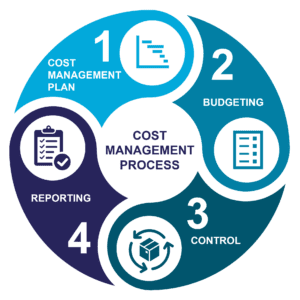
The cost management plan is part of the project management plan, which is defined before the project work begins. It is a complete guide which defines how the project, and therefore its costs, should be managed. Having the cost management plan defined provides us with the processes and organization needed to manage project costs.
What is included in the cost management plan? There is no exhaustive list of what should be found in each cost management plan, however the main axes are often identical amongst various projects. For example, we typically recommend sections for defining:
Now with the cost management plan defined, the next step is to establish the initial cost estimation and project budget. Although, the final budget of a project is never the one provided during project initiation. A first estimate will be made at the start of a project, but the budget will always evolve during the life of the project. Think of your personal life, for example. Haven’t you ever budgeted for a vacation and had to reconsider it when something unexpected happened? If your car breaks down, you’d likely change your spending plans for vacation.
The cost estimate is derived from several elements:
The Cost Breakdown Structure (CBS) is a representation of all the project costs broken down into a hierarchy based on work. It is derived from the Work Breakdown Structure (WBS) which is part of the schedule management activities. (See graphic below.)
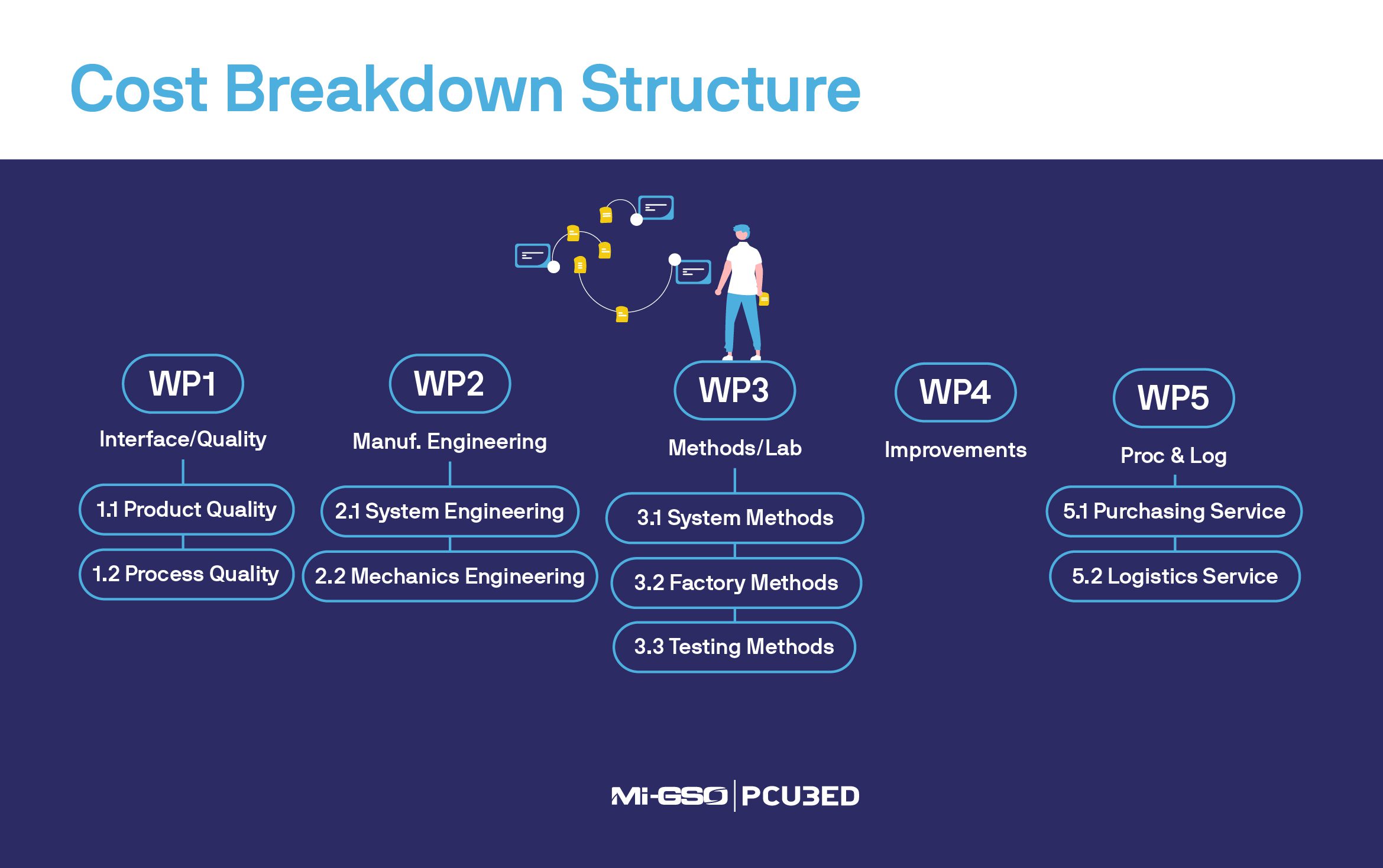
Project Resources are the people and the materials needed to complete a project. Resource planning is necessary to determine how much material, how many workers, and for how long both will be needed. The workforce on a project are often the most costly resources, so it is important they are well planned for. Large projects usually have a designated resource manager for this.
Typically, these estimates are handled inside of a fully-costed schedule. Each resource is assigned tasks with specific durations. Since each worker also has a set pay rate, these assignments allow resource managers to build out the resource-based costs into the schedule.
After completing the CBS and Resource Planning, you know where each cost is coming from. Now you can estimate the total cost of your project, although there are many ways to do so. Let’s take a look at the three most common ways:
Often a combination of these are used, and determining which is best depends on the nature of the project: Is the project repeatable? Is it a new initiative? Each method is associated with risk and opportunity management. For example, a very detailed cost estimate is time consuming but will likely have a lower risk of inaccuracy.

Other ways to estimate cost are as follows:
Once you’ve estimated your project costs, you’re ready to set your baseline. This will be the reference for what is planned for and approved during the entire project.
Now that you have set up the Cost Management Plan and successfully estimated the project budget, it’s time for the bulk of the work – monitoring and controlling project costs.
Cost control allows you to understand how your project costs may differ from your expected budget. Then, you are able to take corrective action. How a team manages and controls costs depends on what they had defined in the Cost Management Plan. In most cases, cost control requires input data provided by the project controls or purchasing teams.
Generally, cost control is also done using a dashboard and requires post-treatment. For a given activity, a dashboard shows clearly the differences between the expenses made (actual costs, actual expenses incurred, budget spent) and the initially planned costs. This is called a deviation. The diagram below shows both “completed” and “forecasted” data.
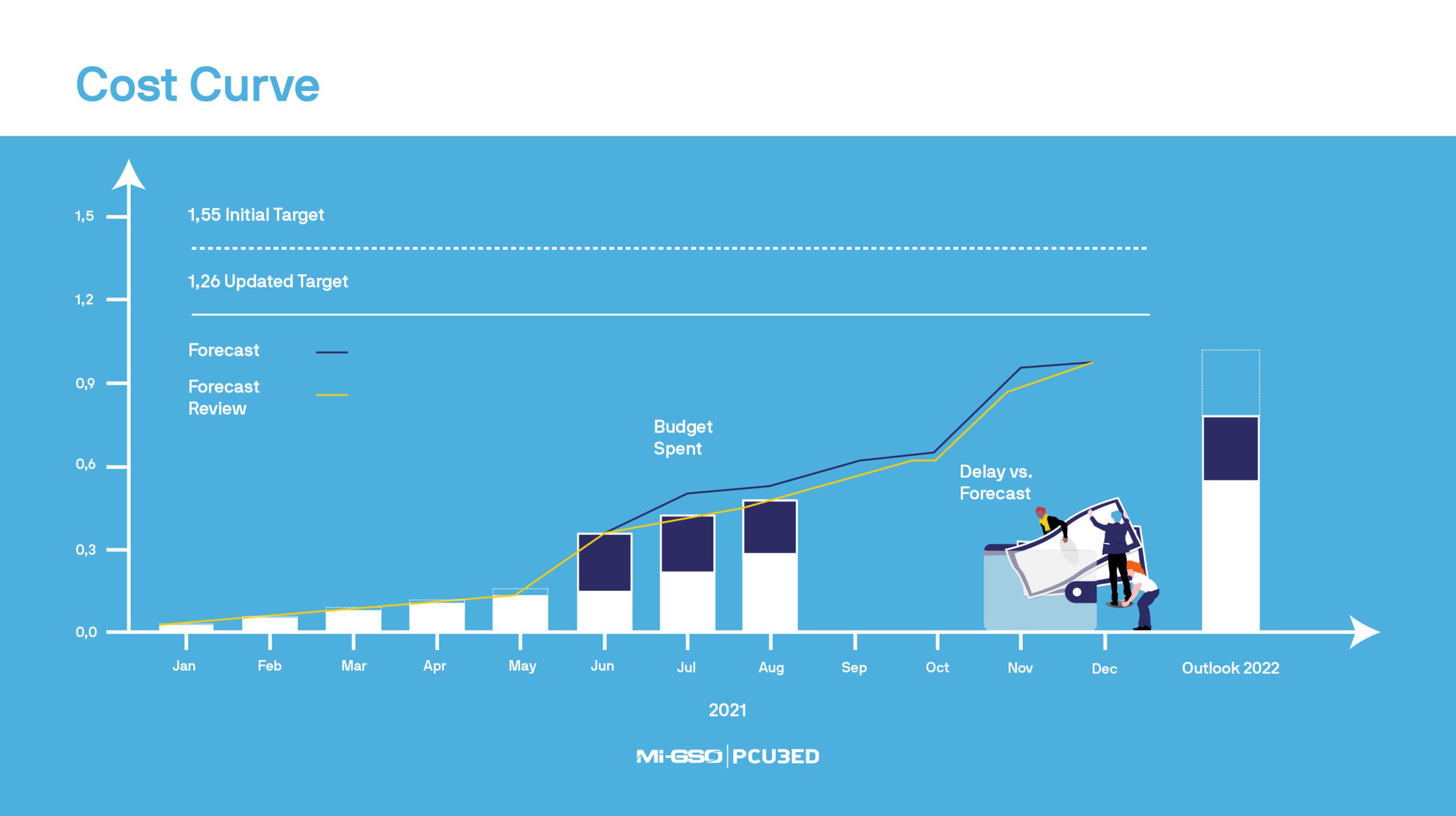
For each deviation identified, the cost manager must investigate the cause. For example, why was a payment not made, or is there a supplier delay? To answer these questions, you can rely on the cost manager. Once the root cause is known and addressed, the team can adjust the forecasted expenses.
All deviations (overspend or underspend) must be justified. Otherwise, you may see your target budget capped and no longer able to ensure the timely delivery of certain work. If a deviation is significant enough to impact your annual financial goal, the cost manager must identify a corrective plan to reduce the deviation and to realign with the project objectives.
Earned Value Management (EVM) is another key method organizations use to measure project performance, and cost is a crucial element of this. Calculating and monitoring the Cost Performance Index (CPI) is one way to ensure the project stays within budget. EVM is a complex subject, so we recommend diving into more detail on this later.
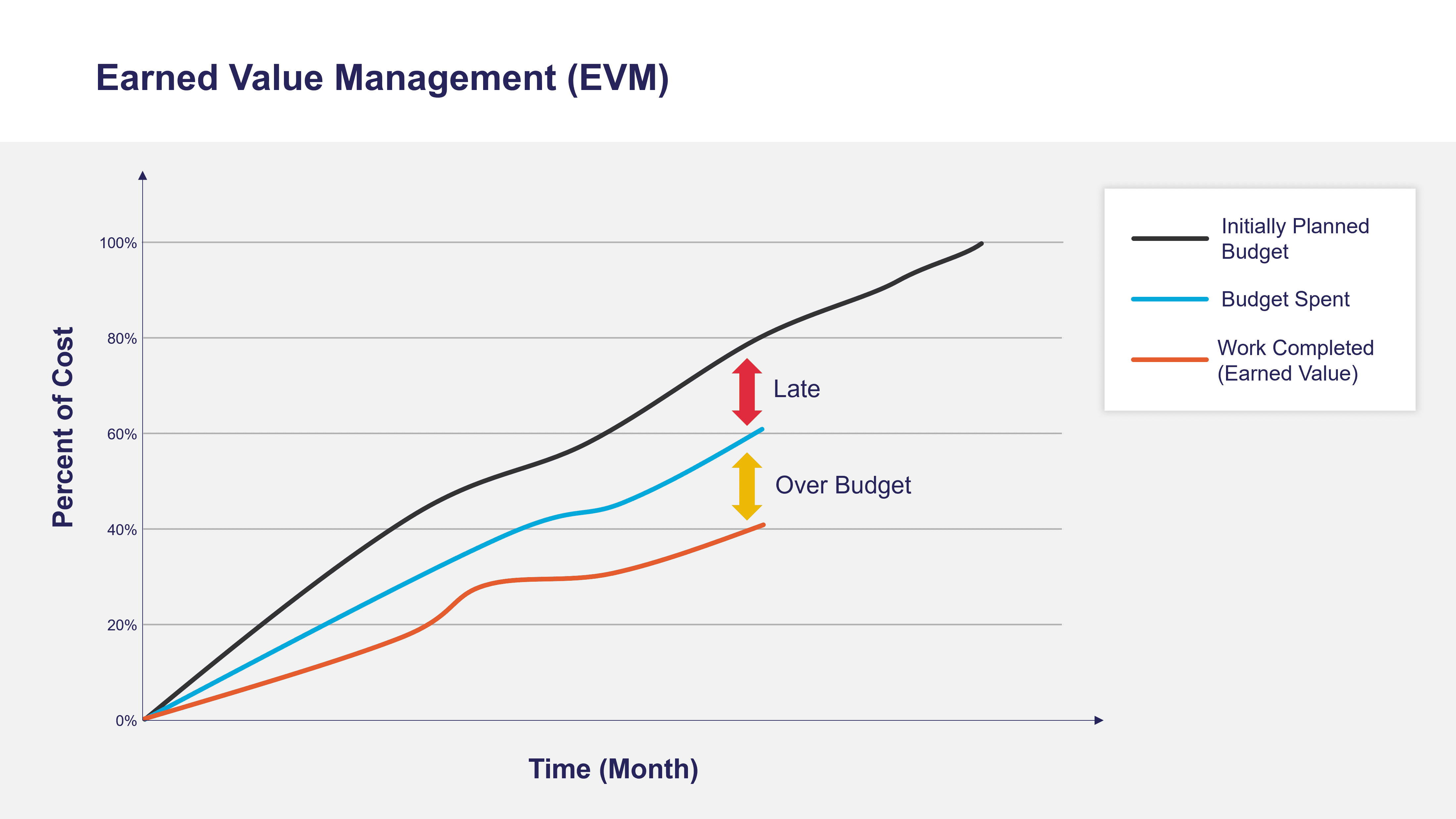
Our final step in the cost management process is reporting. The goal of cost reporting is to provide data and insights so the project manager can make the decisions necessary to keep the project on track.
There are many reports that can be edited based on the different cost visualizations. This can be done by visualizing the work done with regard to the budget spent (Earned value management): This makes it possible to analyze the productivity of the project.
We can also run different analyzes depending on the desired time interval or depending on the particular type of activity.
We can therefore summarize the different phases of cost management through this diagram:
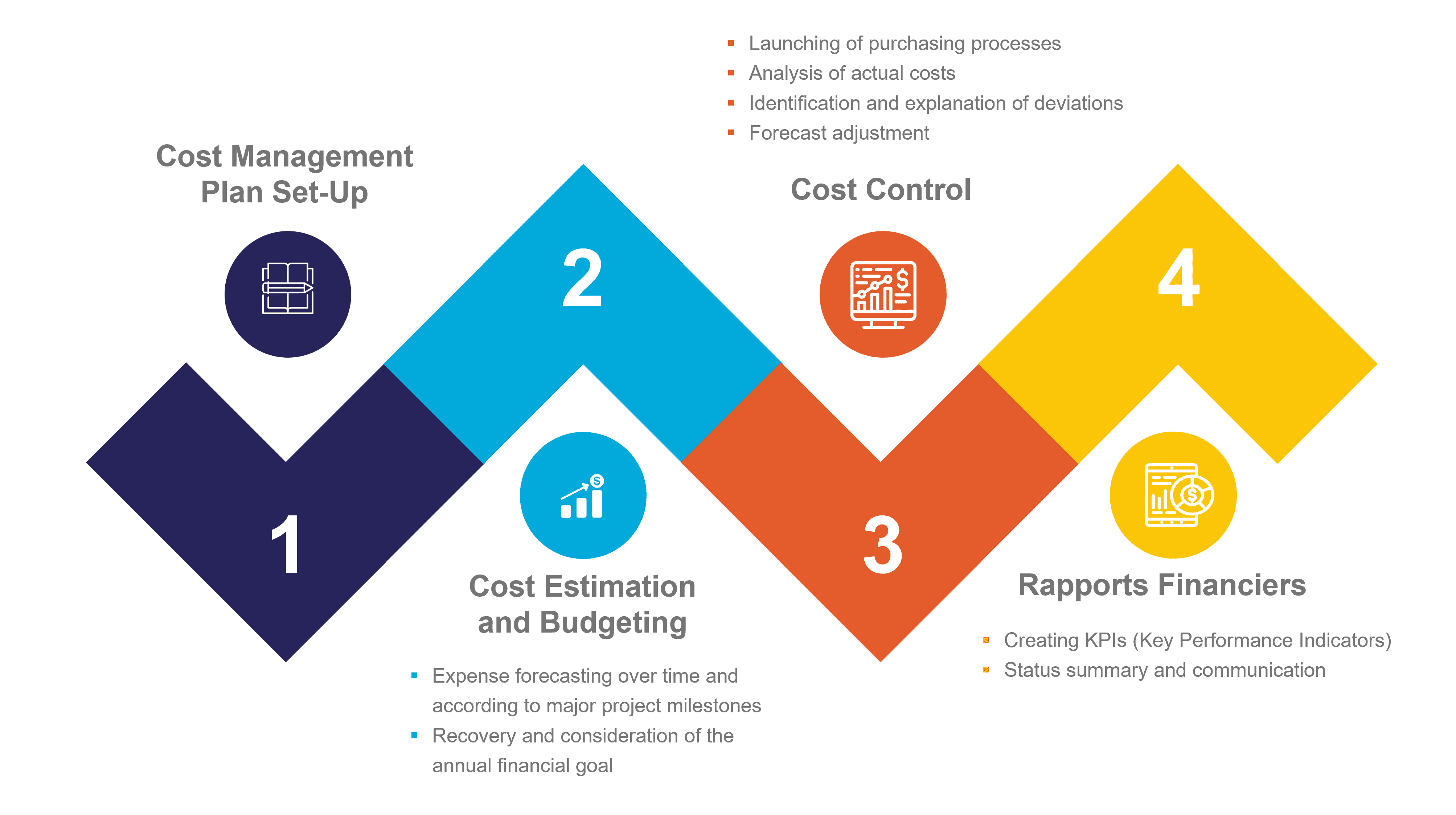
While we briefly introduced the cost manager in this article, in our next article we will go into more detail about who is responsible for managing costs and what each of their roles entail.
This article series was written by Aurélien CRÔNIER and Mehdi DARD with contributions from Fanny DA SILVA and the MIGSO-PCUBED Cost Management Community of Practice.
More on the same subject
Loved what you just read?
Let's stay in touch.
No spam, only great things to read in our newsletter.
We combine our expertise with a fine knowledge of the industry to deliver high-value project management services.
MIGSO-PCUBED is part of the ALTEN group.
Find us around the world
Australia – Canada – France – Germany – Italy – Mexico – Portugal – Romania – South East Asia – Spain – Switzerland – United Kingdom – United States
© 2024 MIGSO-PCUBED. All rights reserved | Legal information | Privacy Policy | Cookie Settings | Intranet
Choose your language
Our website is not supported on this browser
The browser you are using (Internet Explorer) cannot display our content.
Please come back on a more recent browser to have the best experience possible
